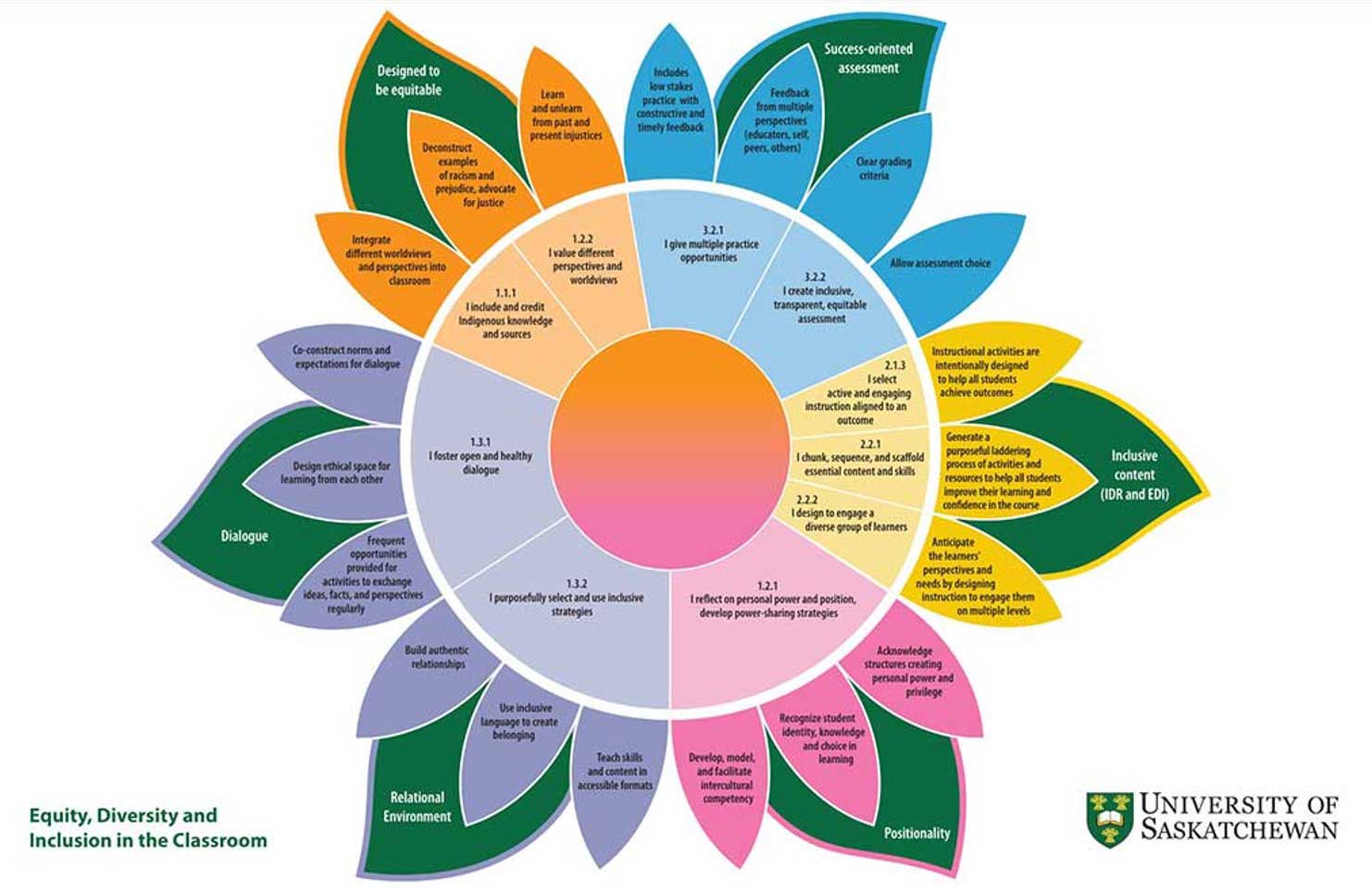Overview
Equity, Diversity, and Inclusion (EDI) embraces a wide range of perspectives and backgrounds fosters a richer learning environment that promotes critical thinking and creativity. It is ensuring all students have access to the same opportunities and resources is crucial for nurturing their potential and preparing them for a global society.
Why EDI matters
- Cultivating equity and inclusion fosters student belonging, especially for historically excluded groups, and enhances their university experience.
- Acknowledging social injustices reduces stereotype threat, helps students to feel seen and heard, and promotes better academic focus and performance.
- Valuing diversity allows us as educators to adapt teaching methods and enhance the learning experience for all students.
- It is our responsibility to be educators and learners in the EDI conversation.
The USask EDI Policy defines equity, diversity, and inclusion, alongside manācihitowin. USask aims to be a place where people feel a sense of belonging and feel "supported, respected and valued for their identity and unique traits."
|
Equity |
Taking the range of human attributes and qualities into account and providing each individual with what they need to be successful. |
|---|---|
|
Diversity |
The range of human differences, including diverse talents, perspectives, backgrounds, worldviews, ways of knowing, skills, and abilities. |
|
Manācihitowin |
A Cree/Michif phrase that translates to 'let us respect each other'. |
|
Inclusion |
Ongoing practice of embracing equity, diversity, and manācihitowin and taking action to create a supportive and welcoming environment. |
EDI Framework
USask Strategic Priority 2: Teaching and Learning
The priority lays out three goals in our roles as educators and learners, to:
- Ensure we implement the commitments and goals of Our Learning Charter to create and foster inclusive learning environments.
- Review and evolve teaching and learning programming, services, and activities to reflect cross-cultural knowledges and experiences and foster inclusivity and intercultural understandings.
- Create learning environments that are inclusive, accessible, and supportive for our educators and learners.
EDI Flower

The EDI Flower is a resource developed by the GMCTL to assist educators in exploring and applying EDI principles in teaching, with all elements aligned to the Learning Charter.
The numbered central sections of the EDI Flower are competencies from the GMCTL Certificate in University Teaching and Learning (CUTL). The outer petals represent foundational EDI principles, emphasizing respect for all identities present in classrooms.
The leaves signify five essential knowledge areas for educators on their EDI journey:
- Positionality
- Relational environment
- Dialogue
- Designed to be equitable
- Success-oriented assessment, and
- Inclusive content (Indigenization, Decolonization, and Reconciliation & EDI)
We can help you explore parts of the EDI Flower to apply to your journey and your teaching.
Appropriate pronouns
Recognizing and honoring students’ identities by using their chosen names and pronouns fosters a sense of belonging, which is crucial to their success in courses. Educators, staff, and teaching assistants can create an inclusive environment by employing inclusive and respectful language.
Please see this document for resources and suggested language to support this practice.
EDI resources
Articles
- Equity, Diversity, and Inclusion in the classroom
- Inclusive teaching strategies: Reflecting on your practice
- Easy ways to make your course more accessible
- Indigenization and assessment: Rethinking traditional practice
Course and resources
- Course Design & EDI: a Canvas course for educators, staff, and leaders. Contact GMCTL
- The Learning Charter in Practice
USask Policies and frameworks
Get support
Contact Roberta Campbell-Chudoba, Gwenna Moss Centre for Teaching and Learning

